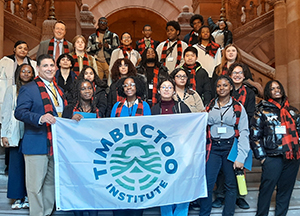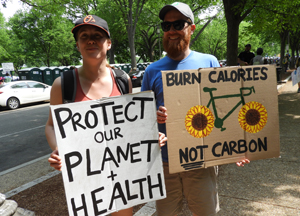
Clean Air Interstate Rule Summary
The Adirondack Council's Summary of the EPA's Clean Air Interstate Rule Formerly the Proposed Interstate Air Quality Rule
Federal Register- January 30, 2004
Click to See the Council's Position on the Clean Air Interstate Rule
Outlined below is a brief summary prepared by the staff of the Adirondack Council of the United States Environmental Protection Agency (USEPA) Clean Air Interstate Rule (CAIR) formerly the Proposed Interstate Air Quality Rule that places new regional caps on power plant emissions of sulfur and nitrogen in 29 states and the District of Columbia. USEPA published the proposed regulation in the Federal Register on January 30, 2004 and the final rule was issued on March 10, 2005.
Readers are encouraged not to rely on this summary alone. EPA's website, www.epa.gov/interstateairquality has links to the full text of the rule as well as the details on the hearings, technical data and analysis conducted by USEPA.
The Rule
USEPA new Clean Air Interstate Rule (CAIR) limits emissions from power plants in the region that contribute to the formation of ozone and particulate air pollution. The identified pollutants are the same as those that contribute to acid rain - sulfur dioxide and nitrogen oxides.
Emissions of sulfur dioxide will be capped by adding two new phases to the existing acid rain cap and trade program. Nitrogen oxide emissions will also be subject to a new cap and trade program. The regional twenty-two (22) state nitrogen cap and trade program, that was designed to control summer ozone only, which will go into effect in 2004, will be merged into this new year-round control program. Power plants will be regulated in the eastern half of the country where the emissions from one state drift downwind and contribute substantially to the air pollution problems of other states.
The caps are on total emissions in the region. USEPA will issue a fixed number of pollution credits, a portion of which will be allocated to each plant operating within the 29 states subject to this rule. Companies will then be allowed to buy or sell credits, as under the existing acid rain program, but the number of credits needed for each ton of pollution will double and later triple.
Sulfur dioxide emissions from power plants in the region will be cut 50% from 2002 levels in the region by 2010 and by 71% by 2015. Nitrogen emissions from power plants in the region will also be reduced in two phases, to levels 65% below current emissions by 2015.
With CAIR, the USEPA is acting under its existing authority to regulate ozone and particulates, under section 110 of the Clean Air Act (CAA). That provision allows USEPA to intervene when the interstate transport of pollutants, drifting from one state to another, substantially contributes to the pollution levels of states downwind, making it difficult for the downwind states to meet ambient air quality standards on their own. States in the 29 state eastern region would be obliged to amend their state implementation plans (SIP) to implement the new regional caps on sulfur and nitrogen. While any state would have the option to meet targets through its own approach, participation in a multi-state cap and trade program would be encouraged. USEPA will prepare a model cap and trade program for states to adopt in a supplemental publication in the federal register.
USEPA has stated that it would prefer that Congress pass legislation, not only because it would lessen the prospects for litigation, but also because Congress could streamline the process. USEPA does have an affirmative obligation under the CAA to act on interstate transport on behalf of the downwind states, and therefore has elected to proceed under Section 110.
The Impact
USEPA predicts that this rule will substantially reduce particulate and ozone pollution in downwind states, allowing a substantial number of counties now out of compliance for particulates and ozone to meet air quality standards without further action. The benefits will be significant in terms of human health and in ecological health.
Benefits to Human Health
Health benefits to the population of the Eastern United States will be substantial, easily exceeding costs by ten-fold. The impacts of particulates and ozone on human health are well-chronicled in the supporting documents produced for this proposal. The Agency also predicts a substantial reduction in mercury emissions as a co-benefit to the sulfur and nitrogen reductions. Mercury also poses a threat to human health and wildlife.
Ecological Benefits
The ecological gains will also be substantial. The new rule will reduce the airborne deposition of nitrogen to watersheds, where nitrogen contributes to crop damage and eutrophication of water bodies like Long Island Sound and Chesapeake Bay.
The rule, USEPA predicts, will improve visibility in many parts of the eastern U.S, including National Parks like the Great Smoky Mountains.
The Built Environment
CAIR will also aid historic preservation by reducing acid and particulate deposition that damages cultural monuments and other materials.
Acid Rain
The new rule will implement cuts in sulfur and nitrogen emissions that will decrease the percentage of chronically acidic lakes generally in the Northeast from 6% to 1%. Modeling conducted by the USEPA predicts that the number of chronically acidic lakes in the more sensitive Adirondack Mountain region will be reduced to zero by 2030. The Agency says it is likely that there will be positive effects on the health and productivity of forest systems in the region.




